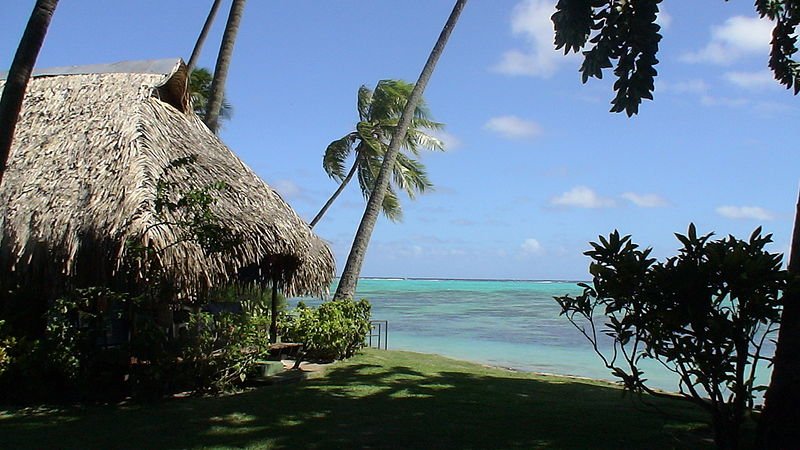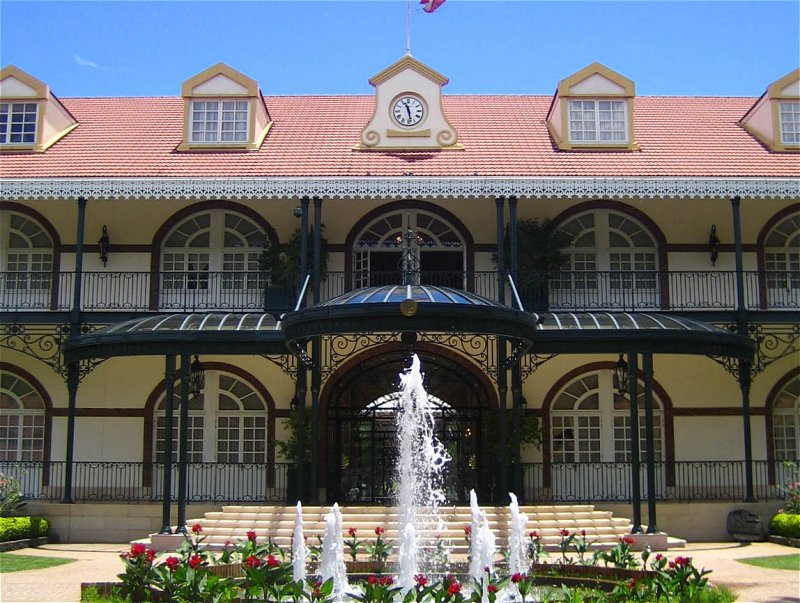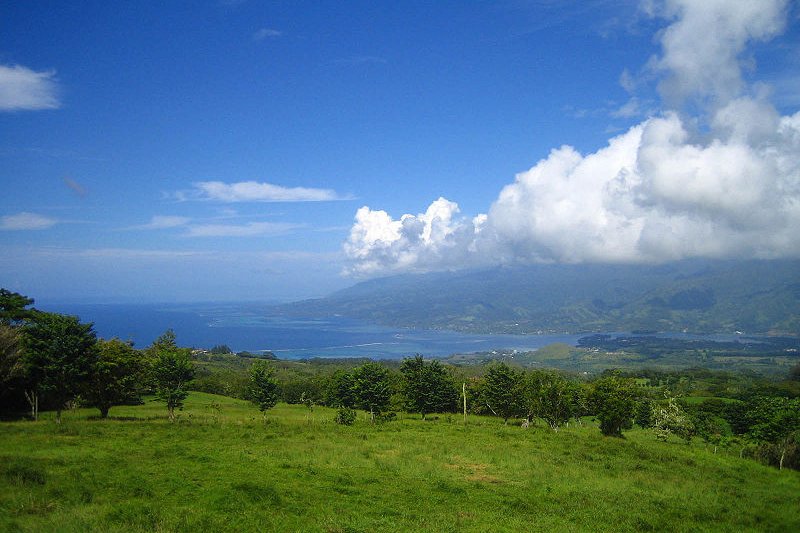
Tahiti, French Polynesia
 Go Back - HOME | Latest French Polynesia > Oceania > World | YouTube : Facebook | About Me : Contact Me
Go Back - HOME | Latest French Polynesia > Oceania > World | YouTube : Facebook | About Me : Contact Me
 Seaside view at Tahiti
Seaside view at TahitiSource: https://en.wikipedia.org/wiki/File:Hotelhibiscus.jpg
Author: Robert Preinfalk

Tahiti is the most populous island in French Polynesia. It covers 1,045 sq km (403.5 sq mi) and has a population of 180,000 (2011 estimate). About 69% of the population of French Polynesia live on Tahiti. The capital of French Polynesia, Papeete, is also in Tahiti, as is its only international airport, the Faa'a International Airport.
Tahiti was originally known as Otaheite. It has been inhabited as early as AD 300 by Polynesian people who arrived there after traveling on outrigger canoes for thousands of miles. Anthropologists believe that early Tahitians came from islands in the western Pacific Ocean such as Fiji, Samoa and Tonga.
The first European to have sighted Tahiti was Captain Samuel Wallis, who reported a laid-backed people living on the island. Wallis was followed a year later by French explorer Louis-Antoine de Bougainville, who was sailing around the world. When Captain James Cook arrived in Tahiti in 1769-70, he observed that Tahitians were grouped under chiefdoms based on family ties. He saw sacred sites called marae where the Tahitians worshipped their gods.
The Viceroy of Peru Manuel de Amat y Juniet attempted to make Tahiti a Spanish colony. His expedition, with a secondary purpose of converting the natives to Catholicism was cut short by King Charles III of Spain who was following a policy of secularism. Meanwhile a homegrown dynasty headed by King Pomare I was established in 1788, eventually controlling the lands that today form the French Polynesia.
 Présidence de Pape'ete, Tahiti
Présidence de Pape'ete, TahitiSource: https://commons.wikimedia.org/wiki/File:Pr%C3%A9sidence.Papeete.JPG
Author: FRED

Naturalist Charles Darwin visited Tahiti in 1835, and wrote about how impressed he was with the conduct and character of the natives - but not of Tahiti's monarch, Queen Pomare IV. The island was also home to famous French painter Paul Gauguin, and result of which a Gauguin museum is now located in Tahiti.
Tahiti became a French overseas territory in 1946. The Tahitians were granted French citizenship. Then in 2003, French Polynesia was made a French overseas community.
Tahiti experiences a tropical climate. The temperature is quite uniform throughout the year, averaging 27°C (80°F) while the sea temperature is aorund 26°C (79°F). The winter months are from May to October, when the temperature may be slightly cooler and drier.
 Tahiti landscape
Tahiti landscapeSource: https://commons.wikimedia.org/wiki/File:Taravao.JPG
Author: FRED

Visiting Tahiti, French Polynesia
The Faa'a International Airport (PPT) is near the capital, Papeete. It receives flights from Paris, Auckland, Los Angeles and New York City, among others.Exploring Tahiti
Tahiti has a bare-bone public transport provided by its open-air buses. Do not expect high comfort, but then again, it's also inexpensive. Most rides will cost you less than US$2. You can also rent a car to drive around for about US$100 per day.Major towns in Tahiti
- Papeete - capital
- Faaa
Places of Interest in Tahiti, French Polynesia
- Arahoho blowhole
- Arahurahu Marae
- Gauguin Museum
- Le Marché
- Les Trois Cascades
- Pointe Venus Lighthouse
- Tomb of King Pomare V
 Latest updates on Penang Travel Tips
Latest updates on Penang Travel Tips
About this website

Dear visitor, thank you so much for reading this page. My name is Timothy Tye and my hobby is to find out about places, write about them and share the information with you on this website. I have been writing this site since 5 January 2003. Originally (from 2003 until 2009, the site was called AsiaExplorers. I changed the name to Penang Travel Tips in 2009, even though I describe more than just Penang but everywhere I go (I often need to tell people that "Penang Travel Tips" is not just information about Penang, but information written in Penang), especially places in Malaysia and Singapore, and in all the years since 2003, I have described over 20,000 places.
While I try my best to provide you information as accurate as I can get it to be, I do apologize for any errors and for outdated information which I am unaware. Nevertheless, I hope that what I have described here will be useful to you.
To get to know me better, do follow me on Facebook!
Copyright © 2003-2025 Timothy Tye. All Rights Reserved.